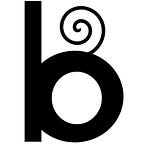A STEM Book Review: The Spacesuit
I have recommended several children’s STEM books that I enjoy reading to my students. The 50th anniversary of Apollo 11 moon landing made space a big topic of conversation. There are so many children’s books about the universe, galaxies, planets, moon and space travel (fiction and nonfiction). Finding a book that kids enjoy listening to for 7–14 minutes (the length young kids’ attention span) is almost like finding a diamond in the rough.
After several weeks of talking about space, some kids were telling me they did not want to go to space or build a spaceship. Well, The Spacesuit: How a Seamstress Helped Put Man on the Moon by Alison Donald is one story about the spacesuit that I believe can expand children’s minds in terms of the possibilities of jobs that one can do in supporting the cause even if they don’t want to be the ones going to space.
The story follows a seamstress named Ellie who loves to sew, and how she worked with her team to win the spacesuit competition.
This storybook presented many good lessons:
- Teamwork is crucial in getting the job done
- To get to the best outcome, you need a diverse set of minds working together. In order to make a spacesuit, designers, engineers and seamstresses work together by sharing all of their idea.
- Trial and error is part of the process — it is not possible to get it right the first time.
The story leads up to a climax that puts the kids on the edge of their seats. They really wanted to know if the main characters’ work would win the competition. We had a good laugh looking at the illustrations on the pages that showed the other competitors’ suits not working out. It was a very enjoyable read.
Books and storytelling can be used to inspire and lead into some great STEAM experiments. Here’s a STEM activity suggestion: Share this story with your students, and do a design activity that includes very precise criteria that students can follow and test their design.
For example, if the test subject is a cotton ball, one criteria could be to keep a cotton from getting wet in the water. How could you make sure that a cotton ball on a submarine expedition doesn’t get wet?
The Museum of Flight in Seattle, WA, set up a library workshop that consists of putting a marshmallow in a vacuum (see photo below).
It might be hard to set up the same activity since not every home has a vacuum pump. So, you could just change the criteria a bit and use what you have at home or in the classroom.
Have fun setting the criteria!
